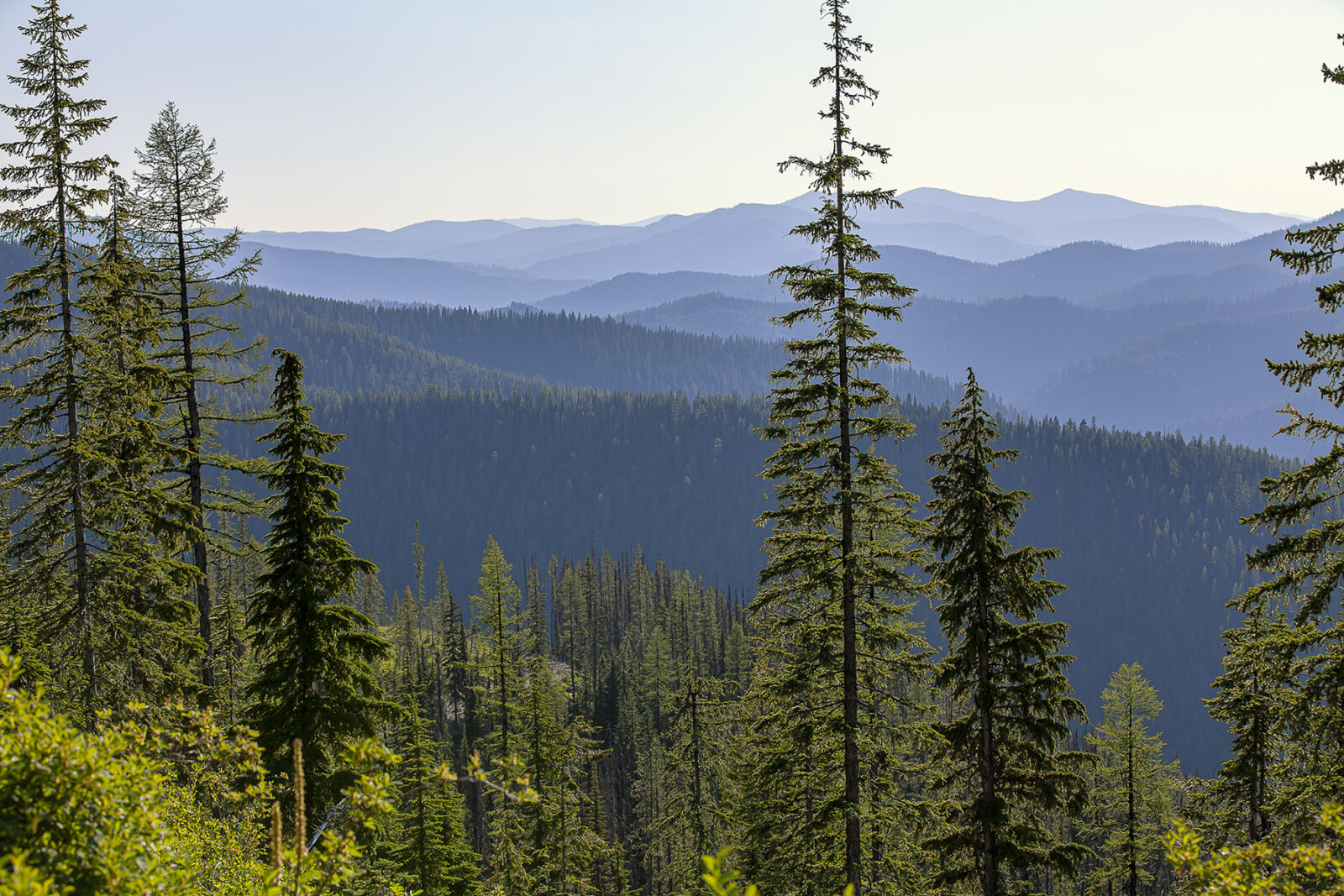National Forests provide recreational opportunities and resources like fresh drinking water and wildlife habitat, and they also play a vital role in regulating environmental processes that are a little less apparent to most of us. Comprising a major portion of U.S. forests, public National Forests are one of the largest carbon storage systems in the country. Across 193 million acres of land, tens of millions of trees from coast to coast help mitigate climate change. But exactly how they do that may be surprising.
Remember photosynthesis? That is the nifty process in which trees and other plants absorb carbon dioxide (CO2) and release oxygen. Photosynthesis combines water and CO2 from the atmosphere with energy from sunlight, creating a chemical reaction that yields oxygen and glucose, a carbon-based sugar that fuels tree growth and forms cellulose. Cellulose is what gives trees their shape and rigid structure, and it’s made up of carbon, oxygen and hydrogen. In fact, half the weight of wood is carbon! It follows then, that the more trees we plant, the more carbon we sequester. But converting CO2 to carbon-containing cellulose isn’t the only way trees sequester carbon.

Forests store carbon in several carbon “pools,” which are above ground in the form of live tree trunks, branches, leaves, and shrubs, on the forest floor as dead trees and litter, and below ground as live roots and soil. Yes, soil.
Soil, commonly referred to as “dirt,” is a mixture of organic matter, minerals, liquids and organisms. Soil plays a vital role in forest ecosystems. In addition to providing habitat for soil-dwelling organism and helping to filter water, soil also stores carbon. In fact, soils are the largest on-land carbon pool on the planet!
In 2021, forest soils stored slightly more than half of all the carbon stored in forest carbon pools in the lower 48 and Alaska!
While the carbon storage power of soils is widely known in the scientific community, the impact of reforestation on soil carbon sequestration was only recently analyzed.
A new study by researchers from the U.S. Forest Service’s Northern Research Station and the University of Michigan details the importance of reforestation to soil carbon sequestration. Reviewing existing data of topsoils (the uppermost layer of soil) taken from land undergoing reforestation in the U.S., the researchers found that reforestation significantly increases carbon storage in topsoils. Reforested lands in the U.S. sequester 13-21 million tons of carbon in topsoils each year, equating to 7-12 percent of all the carbon sequestered by U.S. forests annually.
Soils do store carbon without active reforestation, but this study highlights how carbon storage increases with reforestation. Who knew that planting trees does double carbon duty—storing carbon in the growing trees while also increasing carbon storage in the soils beneath our feet?!
This study underpins the added global benefit of our campaign to plant 50 million trees. Each time we plant a tree on a National Forest, CO2 can be stored in both above and below-ground carbon pools. An additional benefit: reforestation and the resulting carbon sequestration in soils can improve soil productivity, limit erosion and enhance watershed health.
Fortunately, trees are not the only plants that store carbon in soils. Grasses, like the native tallgrass species the NFF is restoring at Midewin National Tallgrass Prairie, also store carbon in the humble dirt between their roots. Talk about doing double duty!
Soil is a powerful helper in fighting global climate change. Paired with the 50 million trees we are planting across National Forests, these natural climate solutions pack a potent punch!

